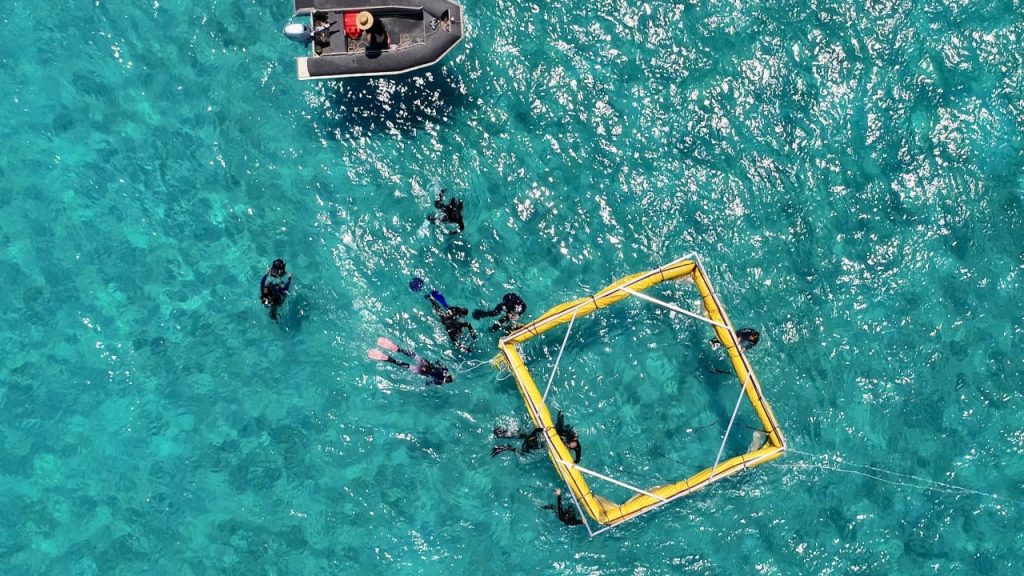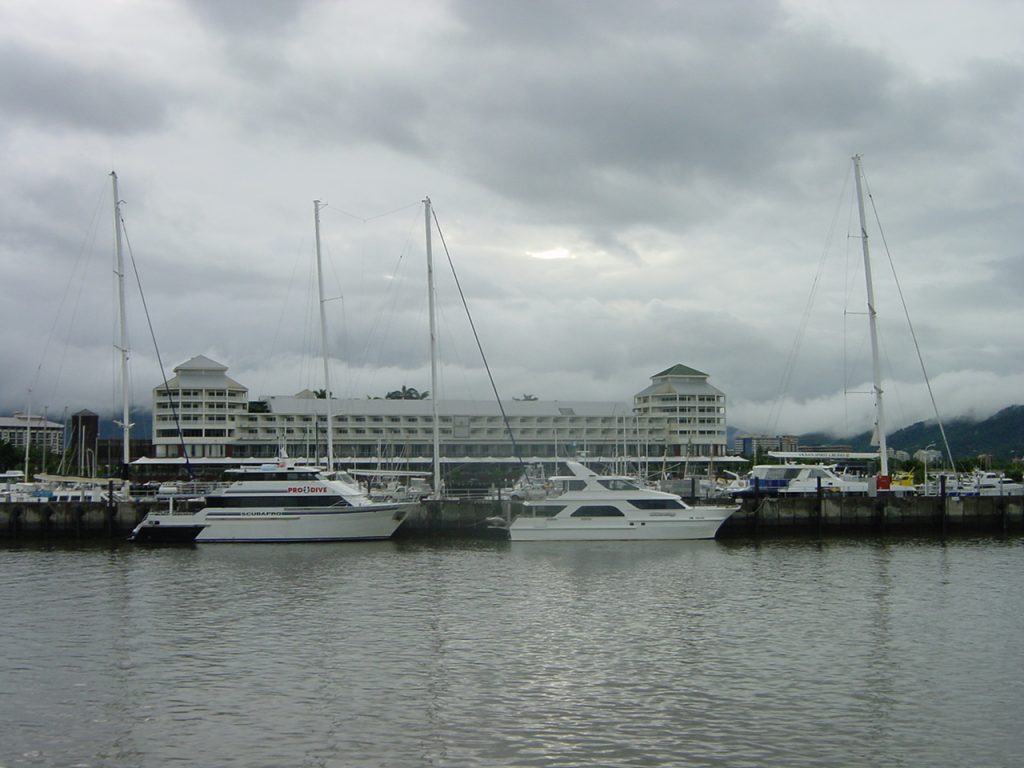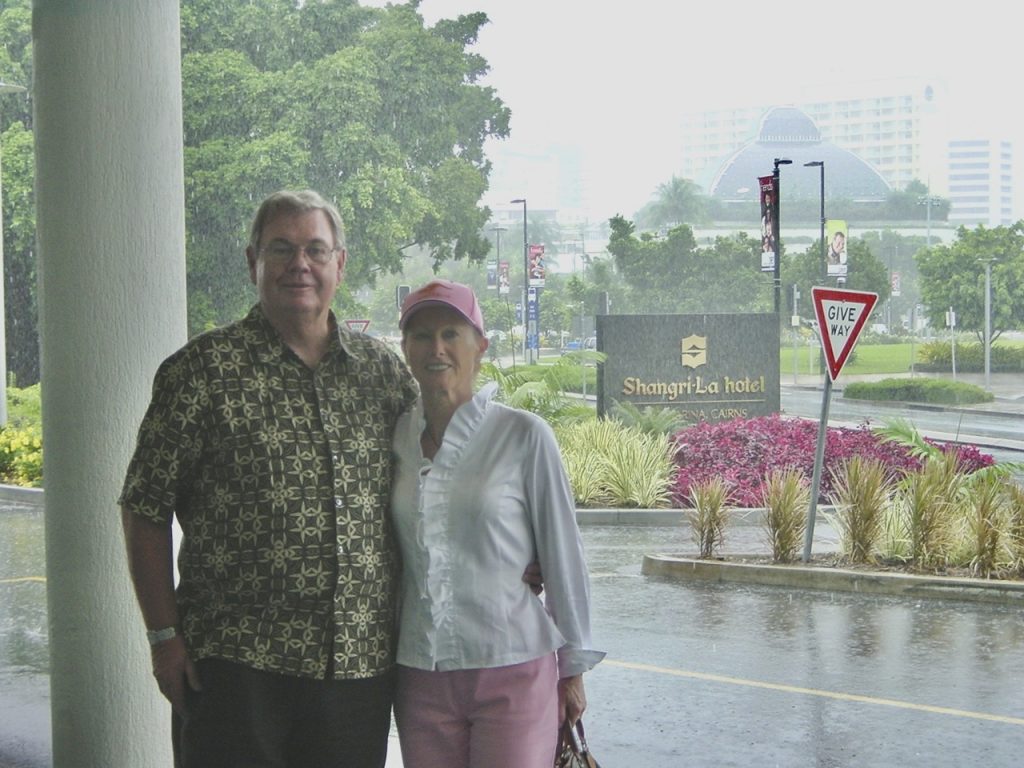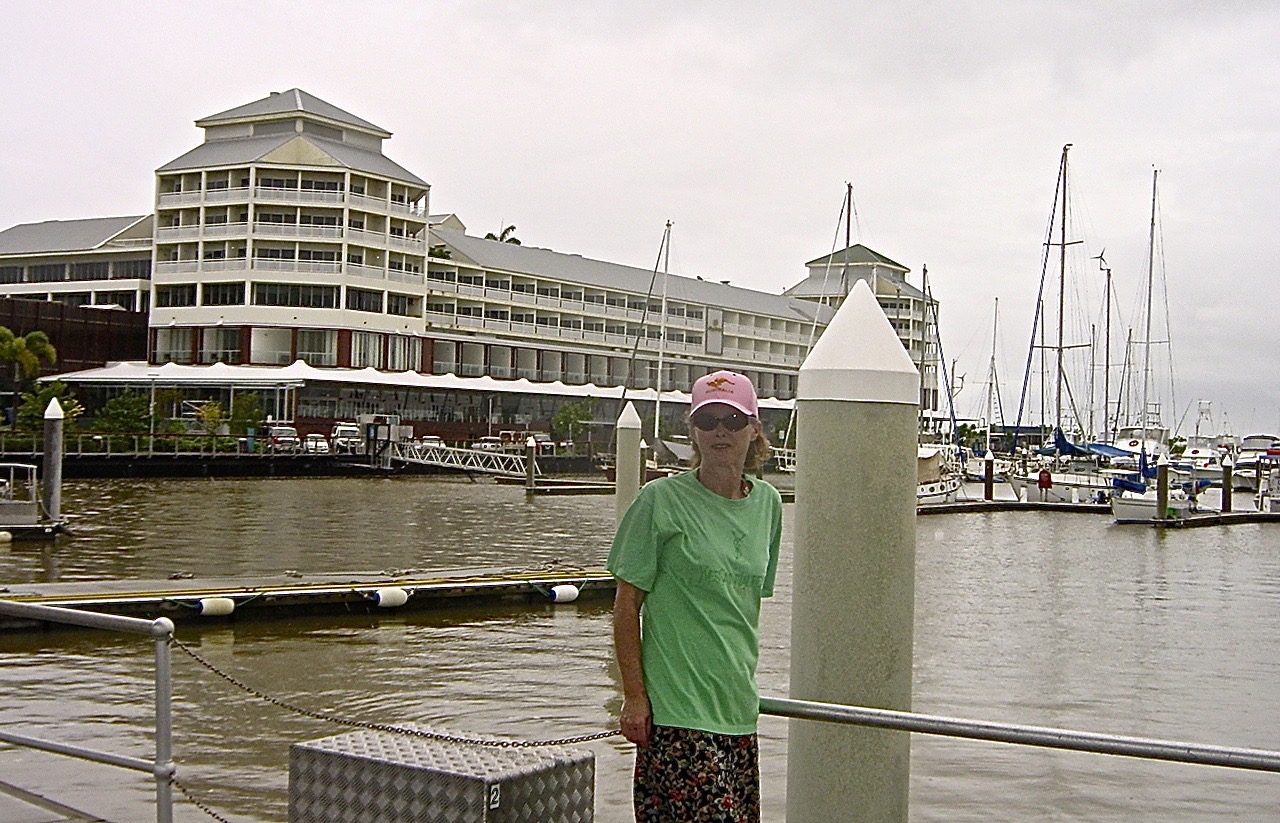The Coral Sea was gloomy gray under a typical March weather, not a sign of smooth sailing. Lightly equipped, we reluctantly left the Shangri-La Hotel in Cairns, walked to the nearby marina, and boarded a high-speed catamaran in rain and hair-frizzing humidity. Like other determined tourists that year, we were on our way to the Norman Reef, on the Outer Reef.
As If You Were There
“Don’t think about it!” my husband said. I still frowned at the rocking motion, even from our more stable seat on the stern. Good sea legs aren’t in my sailing arsenal, but I managed the 95-minute sailing with the ‘wave riding’ and the ‘horizon viewing’ tricks against seasickness.
I distracted myself by watching the seabirds that mistook our vessel for a fishing boat, even though no fish bits were thrown overboard. More entertaining was the cabin door suddenly flying open onto a group of seasick girls, who collapsed onto the unoccupied seats exposed to the pelting rain. They couldn’t care less about our destination: the world’s largest living structure and one of its seven natural wonders. When it was my turn to succumb to the sudden and unmistakable jolt in my stomach, I was lucky to pluck a seasickness bag from a crew passing by.
This was no 18th-century sailing with months of onboard living. Not only were we not exploring uncharted territories, but we would soon set foot on a floating ‘terra firma.’
Pontoon in sight!
Cold and hungry, I watched our boat dock at a covered floating platform with four levels, and bought a peony-pink fleece jacket from the onboard concession. Besides keeping me warm, the logo Great Barrier Reef, Cairns, Australia would prove that I ‘came, saw, and conquered.’ I avoided the appealing buffet, hoping snorkeling would settle the conflict in my inner ear—where the human balance mechanism operates.
While the crew outfitted snorkelers and scuba divers with wetsuits and other appropriate gear, non-swimmers boarded semi-submersibles or scuba scooters. Meanwhile, visitors with mobility issues stayed dry in the underwater observatory, while a few passengers tried to regain control of their queasy selves.
All discomfort disappeared as I floated atop that natural aquarium, fish with bright and colorful patterns gliding below me in a flowing choreography. Some dared to size me up after I slithered into the water. I recognized the shimmering parrotfish; this prolific pooper/sand producer’s way of life is to nible on the abundant coral. But something was missing from the image I had in mind.
Spongy-looking coral (the hard coral) only added a creamy brown to the bland seascape palette. Sea-fan-shaped feathery coral (the soft coral) undulated in pale muted hues. Instead of the flamboyant reef seen in photographs, the ocean floor seemed to have turned off its lights.
Time went by fast. Two hours later, after satisfying my newly-found hunger, it was time to return to Cairns. A helicopter clattering above us made me wish we had booked a sail-over/fly-back tour. Never mind, all was smooth on the way back to the Southwestern front. Even on that dimmed day in March, the experience was worth it.
When to Go
At the time, I learned—from Russell Hore, Reef Biosearch Manager at Quicksilver Connections—that rain doesn’t affect visibility, but a sunless day dims the colors. On any given day, sediment suspension, tide, and algal bloom can affect the color spectrum. Besides, up to 70-80 percent of coral is of a brown/yellow color—from the nutritional zooxanthellae that live in their tissues.
The best time to see a glorious reef is in winter/spring (when there is less plankton, nevertheless responsible for the bright colors), plus a medium tidal change, about 15K SE wind conditions, and… bright sunny weather.
About Then and Now
In 1770, British explorer Captain James Cook searched for a passage when his ship struck the coral in a maze of, unbeknownst to him, 2900 reefs and 900 islands. Cannons and some ballast went overboard to keep the damaged boat afloat. Eventually, the Endeavour reached a sheltered area—known as Cooktown today—for repair. Cook stumbled upon what is known today as the world’s biggest aquatic park. One that began some 18 million years ago, as new reefs developed on top of old ones.
Today, human actions endanger the 1250-mile-wide reef. It had survived Ice Ages and low seawater levels. But then, overfishing, land clearing, coal mining, urban development, and marine debris have destroyed the old reefs, and global warming and ocean acidification are affecting the new ones.
According to the National Park Australia Council, only 36 percent of Australian marine waters are protected. What’s more, protection fails to accomplish conservation. According to The Reef and Restoration and Adaptation Program (RRAP), preventing coral bleaching will be an ongoing fight and plight. For this reason, the Coast of Cairns is being reseeded with millions of coral spawn harvested from the most thermally resilient ones.
More of my stories about Australia:
Learning Aboriginal Survival Skills
Interpreting Aboriginal Dot Paintings





